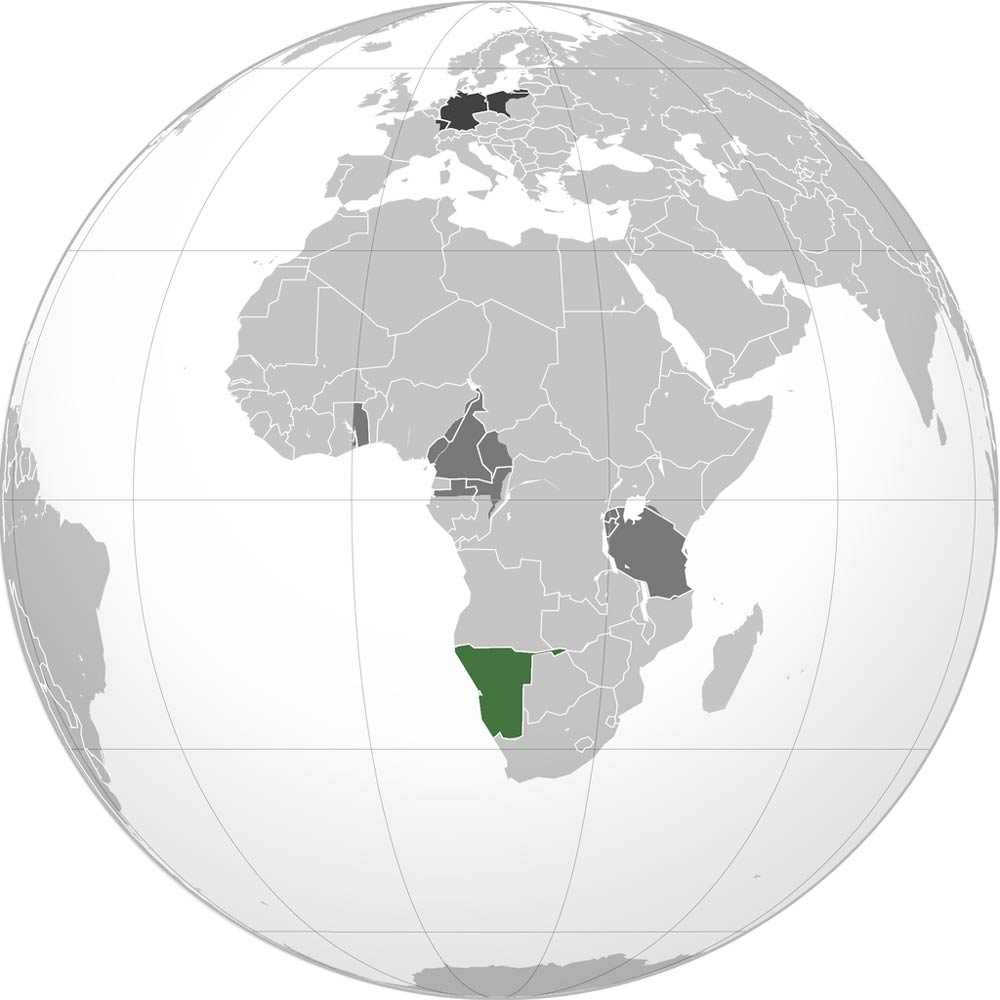 German South-West Africa was a colony of the German Empire between 1884 and 1915. This was when it was taken over by Union of South Africa as part of the British Empire and administered as South-West Africa, and then finally becoming Namibia in 1990.
German South-West Africa was a colony of the German Empire between 1884 and 1915. This was when it was taken over by Union of South Africa as part of the British Empire and administered as South-West Africa, and then finally becoming Namibia in 1990.
Early History of the Region
On November 16, 1882, Adolf Luderitz, a German merchant from Bremen requested protection for a station that he planned to build in South-West Africa. After he was granted protection, one of his employees, Heinrich Vogelsang, bought a piece of land from a native chief. In the piece of land, he established a city at Angra Pequena and named it Luderitz.
On April 24, 1884, he got protection from Imperial Germany to stop British encroachment. Early 1884, SMS Nautilus, the Kaiserliche Marine ship, visited to review the situation. A good report from the government resulted in a visit from SMS Elisabeth and SMS Leipzig. On August 7, 1884, the German flag was raised in South-West Africa. In October of the same year, Gustav Nachtigal arrived on the SMS Mowe as the new commissioner for West Africa.
Forming the DKGSWA
In 1885, the German Colonial Society for Southwest Africa (DKGSWA) was founded with the great support of German bankers, industrialists, and politicians. The DKGSWA was given monopoly rights to fully exploit mineral deposits. This society purchased assets of Luderitz’s failing enterprises. In 1908, diamonds were discovered. The diamonds together with gold, platinum, copper and other minerals became a great investment.
Luderitz’s Death and Aftermath
 Luderitz died in 1886 and the company bought all his lands and mining rights. Over the next several years, the relationship between Germans and the indigenous people continued to get worse. Many treaties, agreements, and vendettas increased the tension in the area.
Luderitz died in 1886 and the company bought all his lands and mining rights. Over the next several years, the relationship between Germans and the indigenous people continued to get worse. Many treaties, agreements, and vendettas increased the tension in the area.
In 1888, the very first group of Schutztruppen arrived (they were secretly sent) to protect Otjimbingwe. The Schutzruppe detachment was composed of two officers, five non-commissioned officers, and 20 black soldiers.
By the end of 1888, the German commissioner was forced to flee to Walvis Bay after failed negotiations with the locals. In the late 1880s, the South-West Africa Company was almost bankrupt and was forced to ask for help from Bhismarck. By 1890, the colony was declared Crown Colony and more troops were sent to the area. German South-West Africa was actually the only German colony where the Germans settled in large numbers.
Rebellion against German Rule
 Between 1893 and 1894, Hottentot Uprising’ of the Nama led by Hendrik Witbooi occurred. The following years saw many other local uprisings against the Germans. Remote farms were attacked and around 150 German settlers were killed. However, an additional 14,000 troops sent from Germany crushed the rebellion in Battle of Waterberg.
Between 1893 and 1894, Hottentot Uprising’ of the Nama led by Hendrik Witbooi occurred. The following years saw many other local uprisings against the Germans. Remote farms were attacked and around 150 German settlers were killed. However, an additional 14,000 troops sent from Germany crushed the rebellion in Battle of Waterberg.
Earlier, the German Lieutenant Von Trotha issued an ultimatum to Herero people. The ultimatum denied them the right of being German subjects and actually ordered the Herero people to leave the country or be killed.
In 1904, Nama entered the struggles against the colonial rule. This uprising was finally stopped between 1907 and 1908. This resulted in between 25,000 and 100,000 Herero, 10,000 Nama, and 1,749 Germans deaths. After the conflict ended, the remaining natives who were released from detention were subject to a policy of deportation, deposition, forced labor, racial segregation and discrimination.
World War I
During the First World War, South African troops opened hostilities with an assault on the Ramansdrift police station on September 13th, 1914. The German settlers were transported to some prison camps near Pretoria. Due to the rising superiority of South African troops, German Schutzruppe together with groups of Afrikaner volunteers, offered opposition only as a delaying tactic.
After the war, the territory was under British control and later made a South African League of Nations mandate. In the year 1990, this former colony became independent as Namibia.